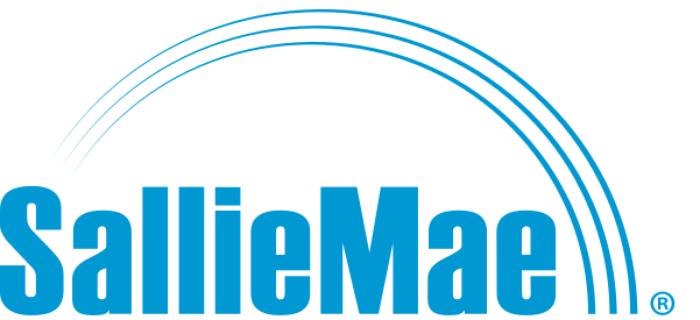
Navigating the world of student loans can feel overwhelming, especially when faced with a multitude of lenders and loan options. Sallie Mae, a prominent player in the student loan market, offers various loan products designed to help students finance their education. But is Sallie Mae the right choice for you? This comprehensive guide delves into the intricacies of Sallie Mae student loans, examining their features, benefits, drawbacks, and comparing them to federal loan options to help you make an informed decision.
We’ll explore Sallie Mae’s loan types, interest rates, repayment plans, customer service, and potential risks. By the end, you’ll have a clearer understanding of whether Sallie Mae aligns with your financial needs and circumstances, empowering you to make a confident choice in your educational funding journey.
Sallie Mae Loan Types and Features

Sallie Mae offers a range of student loan products designed to meet diverse financial needs and circumstances. Understanding the nuances of each loan type—including interest rates, repayment options, and eligibility criteria—is crucial for borrowers to make informed decisions. This section provides a detailed comparison to help you navigate the Sallie Mae loan landscape.
Sallie Mae Loan Product Comparison
The following table summarizes key features of various Sallie Mae student loan products. Note that interest rates are subject to change and are based on current market conditions and individual creditworthiness. Eligibility requirements may also vary depending on factors such as educational institution, enrollment status, and credit history.
| Loan Type | Interest Rate Information | Repayment Plans | Eligibility Requirements |
|---|---|---|---|
| Federal Student Loans (through the government, serviced by Sallie Mae) | Variable or fixed rates, determined by the government. Generally lower than private loans. | Standard, graduated, extended, income-driven repayment plans (IDR) available. | US citizenship or eligible non-citizen status, enrollment in an eligible educational program. |
| Private Student Loans (Sallie Mae Smart Option Student Loan) | Variable or fixed rates, typically higher than federal loans, based on creditworthiness and market conditions. | Various repayment options, including fixed monthly payments or graduated payments. | Good to excellent credit history (or co-signer with good credit), enrollment in an eligible educational program. May require a minimum credit score. |
| Parent Loans (Sallie Mae Smart Option Parent Loan) | Variable or fixed rates, similar to private student loans but based on the parent’s creditworthiness. | Similar repayment options to private student loans. | Good to excellent credit history (of the parent), enrollment of the student in an eligible educational program. |
Benefits and Drawbacks of Sallie Mae Loan Types
Each Sallie Mae loan type presents distinct advantages and disadvantages.
Federal student loans, while often carrying lower interest rates, require meeting specific eligibility criteria and may have limitations on borrowing amounts. Private loans, while offering greater flexibility, typically come with higher interest rates and stricter eligibility requirements. Parent loans can alleviate the financial burden on students, but place the responsibility of repayment on the parents.
Examples of Suitable Loan Scenarios
* Scenario 1: A student with excellent credit and a high-earning potential might opt for a private loan from Sallie Mae to potentially secure a lower interest rate than a federal loan would offer, given their strong credit profile.
* Scenario 2: A student with limited credit history might need to rely on federal student loans as these often have more lenient eligibility requirements.
* Scenario 3: Parents with good credit might choose a Sallie Mae Smart Option Parent Loan to help their child finance their education and manage the repayment themselves. This shifts the financial responsibility to the parents while potentially offering a lower interest rate compared to the student taking out a private loan alone.
Interest Rates and Fees

Understanding the interest rates and fees associated with Sallie Mae student loans is crucial for prospective borrowers to accurately assess the total cost of their education. This section will compare Sallie Mae’s rates to competitors and detail the various fees you might encounter.
Sallie Mae Interest Rates Compared to Competitors
Sallie Mae’s interest rates, like those of other lenders, fluctuate based on market conditions and the borrower’s creditworthiness. A direct comparison requires checking current rates from each lender’s website, as they change frequently. However, a general comparison can illustrate typical rate differences. The following table provides a hypothetical example to illustrate the concept; actual rates will vary.
| Lender | Fixed Interest Rate (Example) | Variable Interest Rate (Example) |
|---|---|---|
| Sallie Mae | 6.5% | 5.0% – 7.5% |
| Federal Direct Loan Program | 5.0% | N/A |
| Discover Student Loans | 7.0% | 6.0% – 8.0% |
| Wells Fargo Student Loans | 7.5% | 6.5% – 8.5% |
*Note: These rates are hypothetical examples only and do not reflect current market conditions. Always check the lender’s website for the most up-to-date information.*
Sallie Mae Loan Fees
Several fees can be associated with Sallie Mae student loans. Understanding these fees is important to budgeting for your education.
Origination Fees: Sallie Mae may charge an origination fee, a percentage of the loan amount, to cover the administrative costs of processing your loan. This fee is typically deducted from the loan disbursement. For example, a 1% origination fee on a $10,000 loan would result in a $100 fee.
Late Payment Fees: Late payments on your Sallie Mae loan will incur late fees. The exact amount of the late fee varies but is typically a percentage of the missed payment. Consistent on-time payments are essential to avoid these charges.
Other Potential Fees: Other potential fees might include returned payment fees (if a payment is returned for insufficient funds) and fees for specific loan servicing actions. Review your loan documents carefully for a complete list of applicable fees.
Hypothetical Repayment Schedule
The total cost of a Sallie Mae loan depends heavily on the interest rate, loan amount, and repayment plan chosen. The following illustrates a simplified example:
Scenario 1: $10,000 loan at 6% interest, 10-year standard repayment plan. This would likely result in a monthly payment of approximately $111 and a total repayment cost exceeding $13,300 (including interest).
Scenario 2: $10,000 loan at 8% interest, 10-year standard repayment plan. This would result in a higher monthly payment (approximately $121) and a total repayment cost significantly higher than Scenario 1 (over $14,500).
Scenario 3: $10,000 loan at 6% interest, 15-year extended repayment plan. This would lower the monthly payment but increase the total interest paid over the life of the loan compared to Scenario 1.
It’s crucial to carefully consider the trade-offs between monthly payment amounts and total interest paid when selecting a repayment plan.
Customer Service and Support
Navigating the complexities of student loan repayment requires reliable and accessible customer service. Sallie Mae, as one of the largest student loan servicers in the US, offers a variety of support channels designed to assist borrowers throughout their loan journey. However, the effectiveness of these channels and the overall borrower experience can vary significantly.
Sallie Mae’s Customer Service Channels and Borrower Experiences
Customer Service Channels
Sallie Mae provides several avenues for borrowers to access support. These include a dedicated phone support line, a comprehensive online help center with FAQs and resources, and an active presence on social media platforms like Twitter and Facebook. The online resources often provide quick answers to common questions, while phone support allows for more personalized assistance with complex issues. Social media serves as a platform for quick updates and to address public concerns, though the response time may vary. The effectiveness of each channel depends on the specific issue and the individual’s technical proficiency.
Reported Borrower Experiences
Borrower experiences with Sallie Mae’s customer service are mixed, reflecting the diverse nature of individual situations and the complexities of the loan servicing process.
- Positive Experiences: Some borrowers report positive experiences, citing helpful and knowledgeable customer service representatives who efficiently resolved their issues. These experiences often involve straightforward inquiries or relatively simple problems like updating contact information or understanding payment options.
- Negative Experiences: Conversely, many borrowers describe frustrating experiences marked by long wait times on the phone, difficulty reaching a live representative, and inconsistent responses to inquiries. Negative experiences often involve more complex issues such as loan modifications, hardship applications, or disputes regarding billing inaccuracies. These situations often require multiple contacts and prolonged communication before resolution, leading to significant borrower frustration.
Dispute Resolution Process
For borrowers facing significant difficulties or unresolved issues, Sallie Mae offers a formal dispute resolution process. This typically involves submitting a detailed written complaint outlining the problem and supporting documentation. Sallie Mae is required to acknowledge receipt of the complaint within a specific timeframe and provide a resolution within a reasonable period, as defined by federal regulations. If the borrower remains dissatisfied with Sallie Mae’s response, they may have recourse through additional channels, such as contacting their state’s Attorney General’s office or filing a complaint with the Consumer Financial Protection Bureau (CFPB). The success of this process varies depending on the nature of the dispute and the effectiveness of the documentation provided by the borrower.
Final Conclusion

Ultimately, the question of whether Sallie Mae is “good” for student loans depends entirely on your individual circumstances and financial profile. While Sallie Mae offers a range of loan options with varying features and benefits, careful consideration of interest rates, repayment plans, and potential risks is crucial. Comparing Sallie Mae loans to federal options and understanding your personal financial situation will enable you to determine the most suitable path towards financing your education effectively and responsibly. Remember to thoroughly research and compare all available options before making a decision.
FAQ Overview
What is the difference between Sallie Mae and federal student loans?
Federal student loans are backed by the government, offering borrower protections like income-driven repayment plans and loan forgiveness programs. Sallie Mae offers private student loans, which lack these protections but may have more flexible repayment options in some cases.
Can I consolidate my Sallie Mae loans?
Yes, Sallie Mae offers loan consolidation options, allowing you to combine multiple loans into a single payment. This can simplify repayment, but it may not always lower your interest rate.
What happens if I default on a Sallie Mae loan?
Defaulting on a Sallie Mae loan can severely damage your credit score, potentially impacting your ability to secure loans or credit in the future. It can also lead to wage garnishment and legal action.
Does Sallie Mae offer loan forgiveness programs?
No, Sallie Mae does not offer loan forgiveness programs. Loan forgiveness programs are primarily associated with federal student loans.
